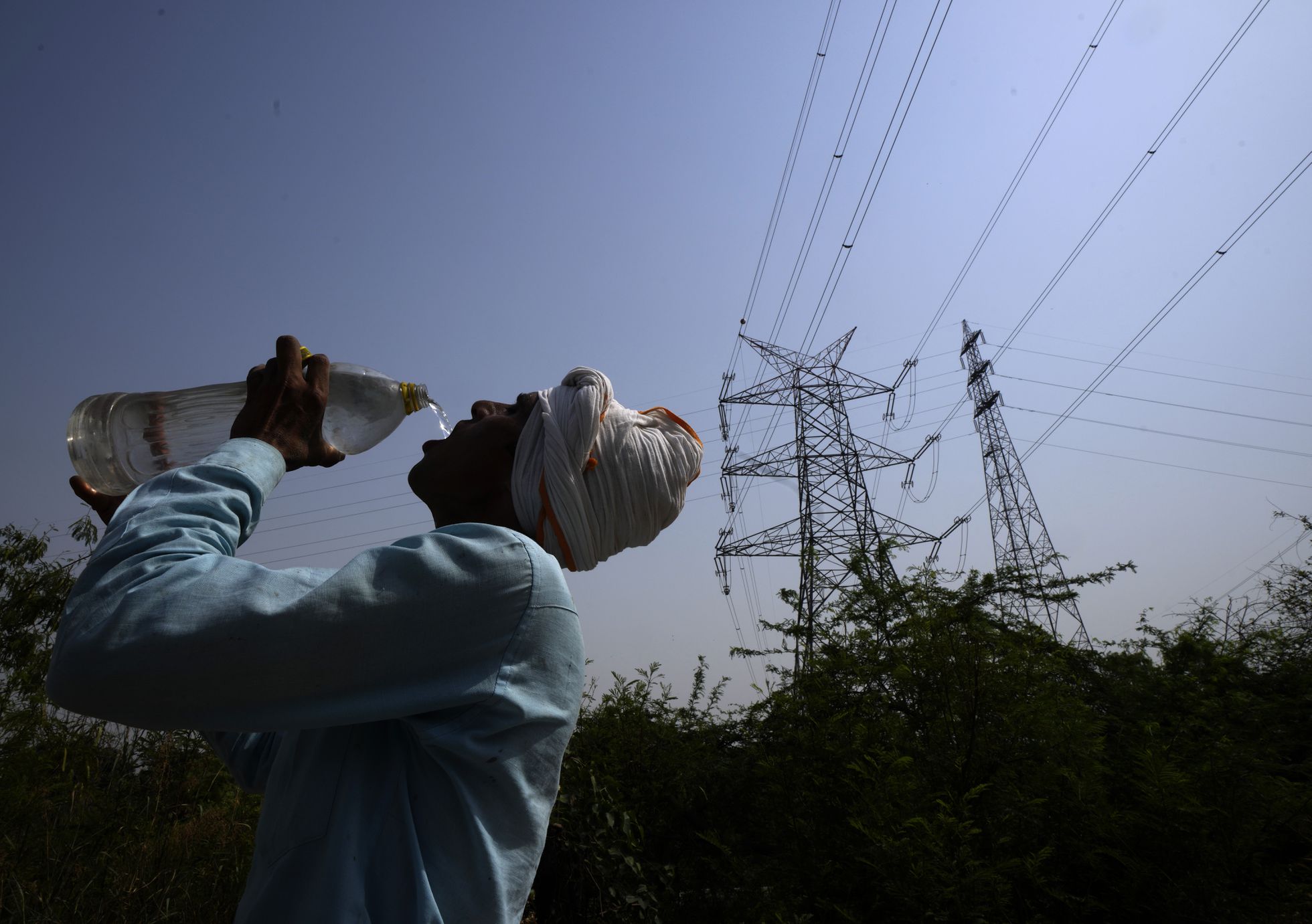The ongoing extreme heat that India has been facing for weeks has pushed an important part of its population to the limit of survival while risking their electrical system, which still relies almost 70% on coal. During March and April of 2022, the country registered its highest average maximum temperature in 122 years. May started with a heatwave that reached over 45 degrees Celsius (around 110 Fahrenheit) and has caused several deaths around the country. 25 deaths have been confirmed by the Health Ministry only in the western state of Maharashtra, caused by the heatwave that impacted India and neighboring Pakistan this week. Rainfall and monsoons caused temperatures to soften as of Tuesday.
. . . . . . . . . . . . . . . . . . . . . . . . . . . . . . . . . . . . . . .Record temperatures have also sparked massive landfill fires in the country of nearly 1.4 billion people. In India’s capital New Delhi, the city’s largest landfill has been on fire for at least a week, further worsening air quality in a city that consistently ranks at the top of the world rankings for air pollution.
Despite daytime temperatures hovering around 115 degrees Fahrenheit in many northern states, the surge in electricity demand has not been met, leading to the collapse of the power sector. According to official numbers, coal stocks are critically low in 108 of the country’s 173 thermal power plants.
India has been reducing its coal consumption since 2015, according to data from the International Energy Agency. In addition, the government had launched a plan to reduce fossil fuel imports, but the supply crisis linked to the intense heat of recent weeks, which also pushed electricity consumption to record levels in April, has generated the worst energy crisis in at least six years. The government has asked public and private companies to increase coal imports to ensure supply in the upcoming weeks and as summer approaches, Reuters reports. India is the second-largest coal buyer in the world, and increasing its acquisitions can affect the prices worldwide.
Coal is currently the main source of greenhouse gas emissions that cause global warming. The climate crisis triggered by these gases and by the fossil fuels that produce them is increasing the average global temperatures and also the frequency and intensity of heatwaves like the one that has hit India and Pakistan, according to the latest IPCC report.
To help cope with power outages, hundreds of passenger rail runs have been canceled to prioritize freight trains carrying coal for power plants. Just over 10% of Indians have access to fans and air conditioners, meaning millions of people have no way to cool down and deal with heat waves. The energy supply outage has meant that even those who own refrigeration systems have not been able to use them. “Reports indicate that excessive demand has caused power outages of up to 16 hours in a single day in certain areas of the country,” says Juan Antonio Añel, professor of Earth Physics at the University of Vigo in Ourense. He believes this episode “has put the spotlight on the dependence” that India has on coal.
At the last UN summit, held in Glasgow, Scotland last November, India was one of the countries that pushed to soften the anti-coal message in the final declaration. The reasons behind India and other developing nations urging this subject are focused on how efforts to battle climate change could affect their economies and subsequently their nations’ wellbeing. These countries claim rich nations have based their growth on fossil fuels, like coal, for decades, and are the main ones responsible for the global warming the planet is currently facing.
This doesn’t mean India is not contemplating to stop the use of coal. According to the latest report from the International Energy Agency (IEA) on the matter, the Indian government policies will lead up to a gradual substitution of coal, being replaced by other sources such as solar power, despite the fact that India is the country in which energy demand is expected to grow the most in the next two decades. According to the IEA, in 2040, around 30% of energy will come from coal, compared to 70% today, and solar power is expected to grow up to 30%, compared to the 4% it currently represents.
Every time heatwaves like the one experienced in India and Pakistan are registered, the same question is raised: is climate change behind this? Although no definite answers have been given, what has been proven already is that heatwaves have increased in intensity and severity during the past seven decades due to human-caused climate change. Last week, the World Meteorological Organization (WMO) claimed that “it is premature to attribute the extreme heat in India and Pakistan solely to climate change,” although they also stated it is consistent with what they expect in a changing climate since the heatwaves have become more frequent, intense and start earlier than in the past.
Currently, a group of scientists is working to determine how much of this phenomenon is being caused by global warming. Basically, what they’re trying to measure is how likely it would be to have an episode like the one India and Pakistan are currently facing if climate change didn’t exist. Mariam Zachariah and Friederike Otto, both from the Imperial College London, are part of the group of experts participating in the study. In a preliminary analysis, Zachariah has stated that if the current climate change process didn’t exist, reaching such high temperatures at this time of the year would only happen in India once every 50 years. “Now it is a much more common event,” she says. “We can expect such high temperatures about once in every four years.” Otto recalls that “until net greenhouse gas emissions end, heatwaves in India and elsewhere will continue to become hotter and more dangerous.”

